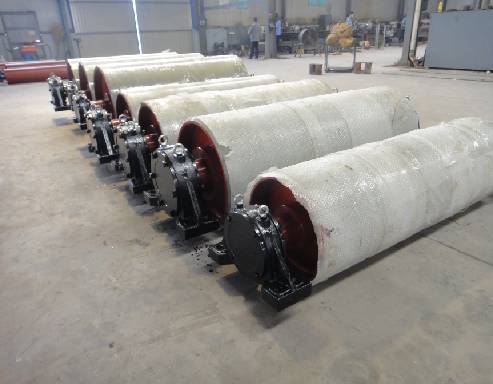 Afrikaans
Afrikaans  Albanian
Albanian  Amharic
Amharic  Arabic
Arabic  Armenian
Armenian  Azerbaijani
Azerbaijani  Basque
Basque  Belarusian
Belarusian  Bengali
Bengali  Bosnian
Bosnian  Bulgarian
Bulgarian  Catalan
Catalan  Cebuano
Cebuano  Corsican
Corsican  Croatian
Croatian  Czech
Czech  Danish
Danish  Dutch
Dutch  English
English  Esperanto
Esperanto  Estonian
Estonian  Finnish
Finnish  French
French  Frisian
Frisian  Galician
Galician  Georgian
Georgian  German
German  Greek
Greek  Gujarati
Gujarati  Haitian Creole
Haitian Creole  hausa
hausa  hawaiian
hawaiian  Hebrew
Hebrew  Hindi
Hindi  Miao
Miao  Hungarian
Hungarian  Icelandic
Icelandic  igbo
igbo  Indonesian
Indonesian  irish
irish  Italian
Italian  Japanese
Japanese  Javanese
Javanese  Kannada
Kannada  kazakh
kazakh  Khmer
Khmer  Rwandese
Rwandese  Korean
Korean  Kurdish
Kurdish  Kyrgyz
Kyrgyz  Lao
Lao  Latin
Latin  Latvian
Latvian  Lithuanian
Lithuanian  Luxembourgish
Luxembourgish  Macedonian
Macedonian  Malgashi
Malgashi  Malay
Malay  Malayalam
Malayalam  Maltese
Maltese  Maori
Maori  Marathi
Marathi  Mongolian
Mongolian  Myanmar
Myanmar  Nepali
Nepali  Norwegian
Norwegian  Norwegian
Norwegian  Occitan
Occitan  Pashto
Pashto  Persian
Persian  Polish
Polish  Portuguese
Portuguese  Punjabi
Punjabi  Romanian
Romanian  Russian
Russian  Samoan
Samoan  Scottish Gaelic
Scottish Gaelic  Serbian
Serbian  Sesotho
Sesotho  Shona
Shona  Sindhi
Sindhi  Sinhala
Sinhala  Slovak
Slovak  Slovenian
Slovenian  Somali
Somali  Spanish
Spanish  Sundanese
Sundanese  Swahili
Swahili  Swedish
Swedish  Tagalog
Tagalog  Tajik
Tajik  Tamil
Tamil  Tatar
Tatar  Telugu
Telugu  Thai
Thai  Turkish
Turkish  Turkmen
Turkmen  Ukrainian
Ukrainian  Urdu
Urdu  Uighur
Uighur  Uzbek
Uzbek  Vietnamese
Vietnamese  Welsh
Welsh  Bantu
Bantu  Yiddish
Yiddish  Yoruba
Yoruba  Zulu
Zulu conveyor pulley lagging
Understanding Conveyor Pulley Lagging
Conveyor systems are integral to numerous industries, facilitating the movement of materials efficiently. At the heart of these systems lies the conveyor pulley, a key component that helps drive the belt and maintain its tension. However, to ensure optimal performance and longevity, conveyor pulleys require a specific design feature lagging. This article explores what conveyor pulley lagging is, its types, benefits, and maintenance considerations.
What is Conveyor Pulley Lagging?
Pulley lagging is a protective layer applied to the surface of conveyor pulleys. It serves two primary functions to enhance the friction between the belt and the pulley, ensuring effective power transfer, and to protect the pulley from wear and environmental factors. By increasing the contact area between the belt and the pulley, lagging helps prevent slippage, particularly in conditions involving heavy loads or wet materials.
Types of Lagging
There are several types of lagging materials, each suited for various conditions
1. Rubber Lagging This is the most common type and is known for its excellent grip and abrasion resistance. Rubber lagging is often used in general applications and can withstand various environmental conditions, making it versatile.
2. Ceramic Lagging For harsh environments where abrasion is a concern, ceramic lagging is an ideal choice. It consists of tiles made from high-friction ceramic materials, providing superior wear resistance and effective grip, particularly in applications dealing with highly abrasive materials.
3. Polyurethane Lagging This type offers good wear resistance and is less affected by moisture compared to rubber. It is also flexible, which helps it conform to the belt, providing a tight grip.
4. Steel Lagging Used in extremely heavy-duty applications, steel lagging is durable and provides a solid surface for traction. However, it can generate more noise and vibration, requiring consideration in design.
Benefits of Pulley Lagging
conveyor pulley lagging

The application of lagging to conveyor pulleys brings numerous benefits
1. Reduced Slippage By enhancing the frictional properties, lagging minimizes the occurrence of slippage, ensuring that the belt remains engaged with the pulley and operates efficiently.
2. Extended Equipment Life Lagging protects the pulley from wear, thereby prolonging its operational life. It also safeguards the conveyor belt from damage that could arise from direct contact with metal surfaces.
3. Improved Performance With reduced slippage and enhanced grip, the overall performance of the conveyor system improves. This can result in higher productivity and reduced downtime due to maintenance.
4. Noise Reduction Certain lagging materials, like rubber and polyurethane, can help reduce the noise generated by the conveyor system, creating a more pleasant working environment.
Maintenance Considerations
While lagging provides many benefits, proper maintenance is crucial to ensure its effectiveness. Regular inspections should be conducted to check for wear and tear, as damaged lagging can lead to decreased performance and potential failure of the conveyor system.
If lagging shows signs of wear or damage, it is vital to replace it promptly. Most lagging materials can be re-bonded or replaced without extensive downtime, allowing for the continued operation of the conveyor system. Additionally, it’s beneficial to monitor operating conditions to ensure the selected lagging material is suitable for the environment and material being conveyed.
Conclusion
Conveyor pulley lagging is a critical element in the efficiency and longevity of conveyor systems. Understanding its types, benefits, and maintenance needs can greatly influence the reliability of material handling operations. By investing in quality lagging and adhering to maintenance protocols, industries can realize enhanced performance, reduced downtime, and overall improved productivity in their conveyor systems. As technology continues to evolve, we can anticipate advancements in lagging materials that will further optimize the performance of conveyor systems across various industries.
-
Revolutionizing Conveyor Reliability with Advanced Rubber Lagging PulleysNewsJul.22,2025
-
Powering Precision and Durability with Expert Manufacturers of Conveyor ComponentsNewsJul.22,2025
-
Optimizing Conveyor Systems with Advanced Conveyor AccessoriesNewsJul.22,2025
-
Maximize Conveyor Efficiency with Quality Conveyor Idler PulleysNewsJul.22,2025
-
Future-Proof Your Conveyor System with High-Performance Polyurethane RollerNewsJul.22,2025
-
Driving Efficiency Forward with Quality Idlers and RollersNewsJul.22,2025





























